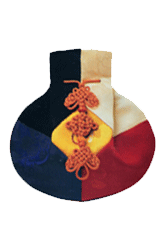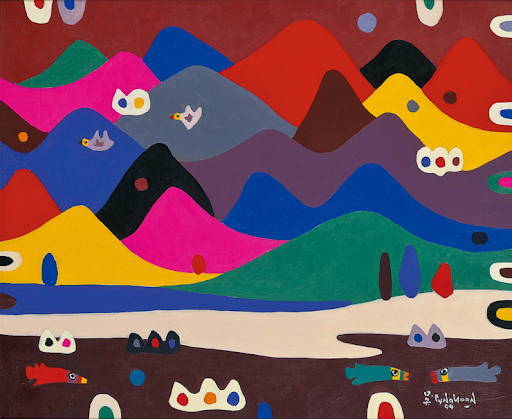'Obangsaek' Story: Korean Traditional Color
- Yvonne Lee
- Jul 27, 2020
- 2 min read
Paper Craft by Se-Haeda
The theory of yin and yang is known as the mutual generation sequence with the five elements: wood, earth, water, fire, and metal. [1] 'Obangsaek' means five orientation colors and refers to the color scheme of the five Korean traditional colors: white, black, blue, yellow, and red. [2] These five colors are shown in five orientations: blue: east, red: south, yellow: center, white: west, and black: north. Each of the five colors has a different characteristic referring to its meaning. [3]
The Theory of Yin and Yang related to Obangsaek (Parnassus/Wikimedia Commons)
Blue color refers to a blessing to all things produce. Red stands for creation, passion, and affection. Yellow is the noblest color in the universe. White expresses truth, life, and purity, and black represents human wisdom. [2] Obangsaek evokes warm emotions related to the balance with the natural five elements (wood, earth, water, fire, and metal). [3]
Obangsaek is the most essential for the inspiration for arts in South Korea. [3] There are various kinds of products inspired by Obangsaek color palette. High saturated each color expresses individually is independent and robust, yet they are harmonized aesthetic emerges.
OSeung-yoon is one of an outstanding painter, who inspired by 'Obangsaek', expresses emotional speech and precise composition to his works. [4] [5] Obangsaek is a strong inspiration for his works. And, his work mirrored the harmony between human beings and nature-based on Obangsaek. [4] OSeung-yoon (1939-2006) studied Korea's natural and traditional culture for a long time. He wished Korean's forefathers a harmonious life. And, he found the roots of the Korean spirit in the symbolic objects and expressions contained in the traditional culture of 'Obangsaek' and 'The Ten Tradition Symbols of Longitude'. Also, he tried to modernize it and built his own creative world of work. [4]
The sky, rivers, trees, flowers, and human beings, fish, and birds combine to form a very peaceful scene, which is in line with the original sentiments and essence of Koreans. In particular, OSeung-yoon's style of painting is that the subject on the screen has a concise. Simple and minimized forms represent the most essential and fundamental. [5]
OSeung-yoon 'History of Wind and Water'
OSeung-yoon 'Mountain and Village'
OSeung-yoon 'Feng-soo'
OSeung-yoon 'Flower'
Sources
Fang, Tony. "Yin Yang: A new perspective on culture."Management and organization Review8, no. 1 (2012): 25-50.
Joo, M. K. "A Study on Features of Color Design using Obangsaek by Each Time-Focusing on the 1970-2000 period."The Treatise on The Plastic Media15, no. 1 (2012): 191-204.
Park, Kun-Young, Dae Young Kwon, Ki Won Lee, and Sunmin Park, eds.Korean functional foods: composition, processing and health benefits. CRC Press, 2018.
Artist of Obangsaek : OSeung-yoon, Naver, blog. https://blog.naver.com/leespider/220290341183, 2015.
Expression of Korean Tradition. Daum, blog, Moonlight and rock. http://blog.daum.net/leepansoo/8624725, 2012.
Images Sources
























Comments